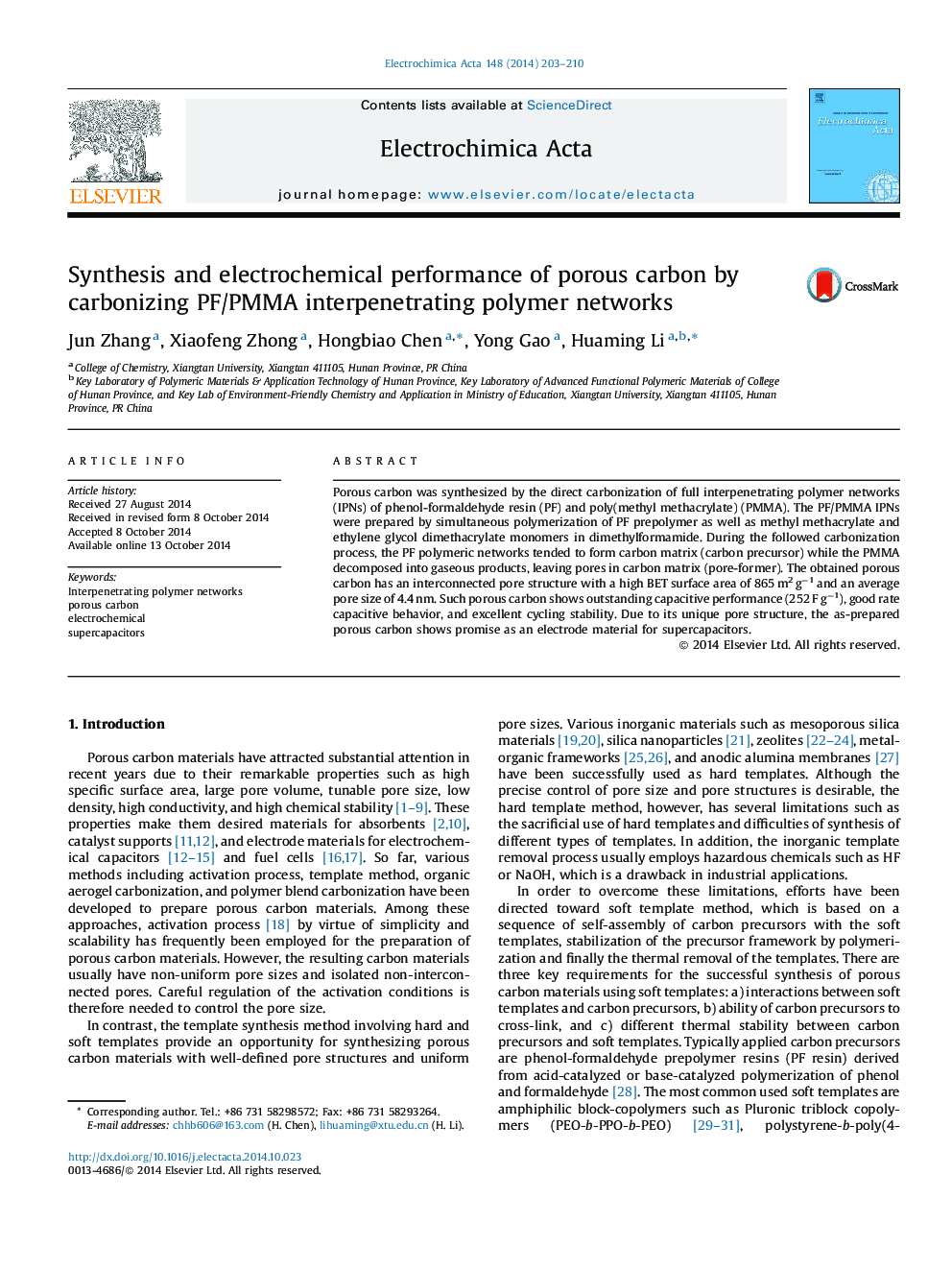| Article ID | Journal | Published Year | Pages | File Type |
|---|---|---|---|---|
| 184910 | Electrochimica Acta | 2014 | 8 Pages |
Porous carbon was synthesized by the direct carbonization of full interpenetrating polymer networks (IPNs) of phenol-formaldehyde resin (PF) and poly(methyl methacrylate) (PMMA). The PF/PMMA IPNs were prepared by simultaneous polymerization of PF prepolymer as well as methyl methacrylate and ethylene glycol dimethacrylate monomers in dimethylformamide. During the followed carbonization process, the PF polymeric networks tended to form carbon matrix (carbon precursor) while the PMMA decomposed into gaseous products, leaving pores in carbon matrix (pore-former). The obtained porous carbon has an interconnected pore structure with a high BET surface area of 865 m2 g−1 and an average pore size of 4.4 nm. Such porous carbon shows outstanding capacitive performance (252 F g−1), good rate capacitive behavior, and excellent cycling stability. Due to its unique pore structure, the as-prepared porous carbon shows promise as an electrode material for supercapacitors.
